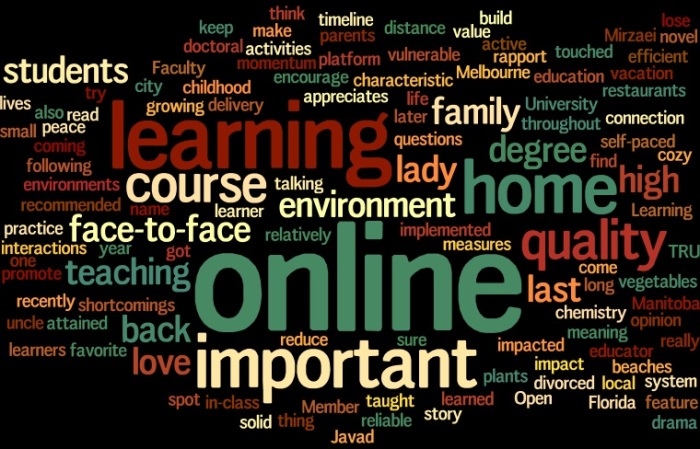Herein, I would like to share my thoughts and methods in providing constructive assessments in alignment with clear and measurable learning outcomes of the course. The following is based on teaching a first-year chemistry course:
Course: Introduction to organic chemistry (first-year course)
Lesson: Nucleophilic substitution reactions
Learning outcomes
After listening to the lecture and responding to practice questions and writing one graded quiz, students will be able to:
- Identify different types of alkyl halides and their electrophilic and leaving group centers
- Analyze the nucleophilic substitution reactions and their two major mechanisms, namely SN1 and SN2
These learning outcomes reflect high-level cognitive skills in which students not only identify the primary concepts and categories but also analyze different mechanisms and apply their knowledge to new cases.
Assessment plans and alignment with learning outcomes
I would divide my plans for assessing students’ progress on these given objectives into two major parts: 1) during-lecture assessments and 2) post-lecture assessments. The First part, during-lecture assessments includes multiple-choice questions which are going to be presented via i-clicker while I am delivering my lecture. I have two important reasons to use these multiple-choice questions. First I am trying to draw the students’ attentions to main ideas as I am transferring the knowledge to them and at the same time showing them how to use the knowledge in a practice question. So in this case the assessment is for learning and not necessarily of learning.
As a powerful assessment tool, i-clicker is also very beneficial to keep the students engaged in the learning process as they are required to participate in the problem-solving task (there will be a participation mark). They will practice each key topic right after it is delivered to them. In this way, not only they will test their understanding of the topic and they can also correct themselves by listening to feedback and standard instructions that they will receive immediately after each question.
The second rationale for using these in-class questioning, is more for me to understand areas in which students need further clarifications during lecture or there is a need for extra practice questions later as homework assignments. Moreover, I would be able to find deficiencies in my teaching plan and strategies and revise them accordingly. Therefore, formative in-class assessments are very essential from both students’ and teacher’s perspective and the attainment of learning outcomes.
The post-lecture assessments consist of practice questions and one graded quiz from what we have just covered in the class. There are three main benefits in these post-lecture assessments. First of all, at this point I will use other types of questions other than i-clicker multiple-choice which help students apply their fresh knowledge directly to a question which the answer needs one or a series of molecular structures. It is worth noting here that in the majority of first- or second-year chemistry courses questions involve drawings of molecules and compounds using conventional atomic bonding and molecular structures. This is a basic and common practice yet very essential for students in introductory courses in chemistry where essay type questions are almost obsolete.
There are three main benefits of this type of assignment for students. Firstly, they can check their knowledge about the topic by applying it to a more challenging question. Secondly, then they can receive immediate feedback about their performance. I, as the teacher, will try to reinforce their understanding at this point and correct their current and potential errors. The third and last benefit is coming from the graded quiz. This is quiz will be in a one- or two-question format with slightly higher level of difficulty than question problems with greater emphasis on analyzing the question and applying the former and new knowledge to solve the question. Right after the quiz, I will show the correct answer and detailed solution on a PowerPoint slide and I will ask students to mark their own quiz based on the grading scheme provided. In this way students not only understands the underlying concept of the question through this self-assessment but also know more about marking and my expectation by actually doing this self-marking activity.
Through this self-assessment, student can reinforce their strengths and I can correct common errors and help students improve. Students who have specific problems are very welcome to come to my office during the office hours for further personalized guide and feedback. All the assessment incorporated in the class time and office hours are formative assessments and are intended to help students internalize the knowledge discussed in each lesson and give them extra guide for independent application of the obtained knowledge in real-world problems. Even the graded quiz although has a mark, I would consider it as formative assessment with the benefits discussed above. The associated mark is very low percentage of the overall mark and the purpose of the grade is to make students take the quiz seriously.
Further summative assessment in forms of homework assignments (online practice questions) and midterms and final exams obviously help students test their understanding and reinforce knowledge.
Similar to the example provided in the video presented in the lesson about memorization of formula in physics, there are certain things in chemistry courses that student will choose to memorize. For example, student can memorize a list of potential nucleophile in reactions. The following is an example of how changing the format of a question can improve the quality of a constructive assessment and further learning of students to a deeper level of understanding
Which of the following anions are nucleophiles? (Assessing only uni-structural or multi-structural learning outcomes)
Which of the following anions are nucleophile in a protic solvent (e.g. in water)? (Assessing relational learning outcomes and promoting generalization and extension of knowledge)



